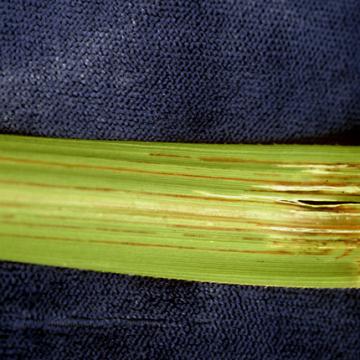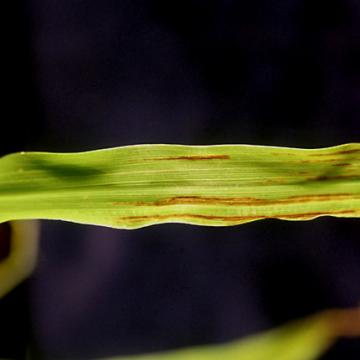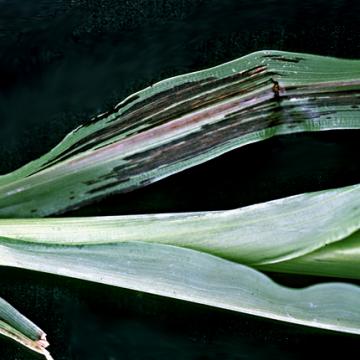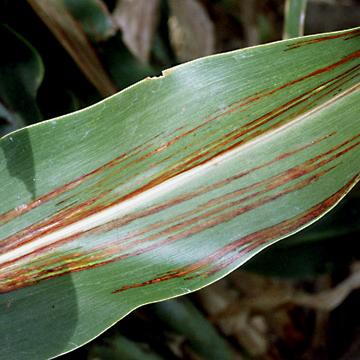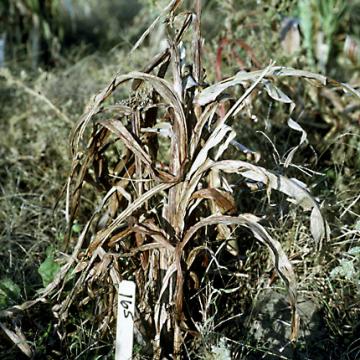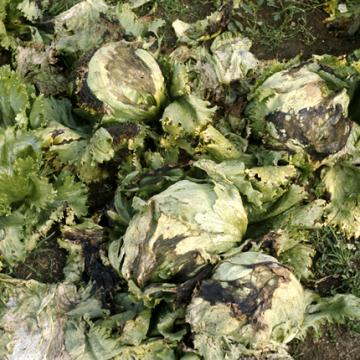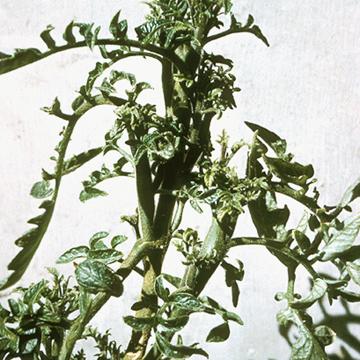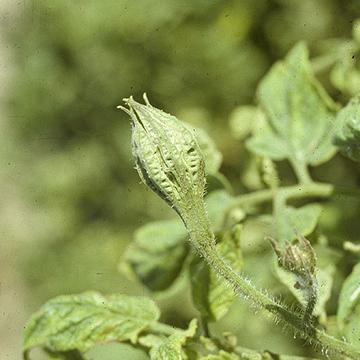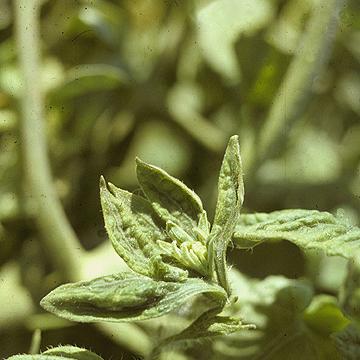DISEASE: Bacterial leaf stripe
HOST: Millet
Leaf with long reddish stripes, usually vein delimited.
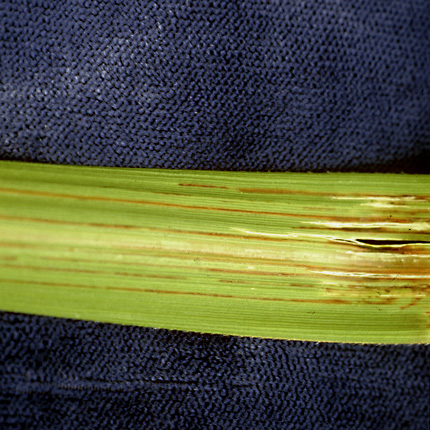
Bacterial leaf stripe | Millet
DISEASE: Bacterial leaf stripe
HOST: Millet (Pennisetum glaucum)
PATHOGEN: Acidovorax avenae
PATHOGEN SYNONYM: Acidovorax avenae subsp. avenae
SOURCE: L. Claflin
DISEASE: Bacterial leaf stripe
HOST: Millet
Leaf with reddish stripes delimited by veins.
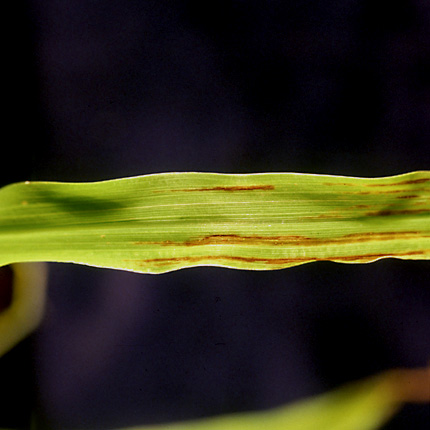
Bacterial leaf stripe | Millet
DISEASE: Bacterial leaf stripe
HOST: Millet (Pennisetum glaucum)
PATHOGEN: Acidovorax avenae
PATHOGEN SYNONYM: Acidovorax avenae subsp. avenae
SOURCE: L. Claflin
DISEASE: Bacterial leaf stripe
HOST: Sorghum
Diseased leaf with linear, interveinal stripes that are purplish red. They also can be yellow, tan, or purple depending upon host reaction.
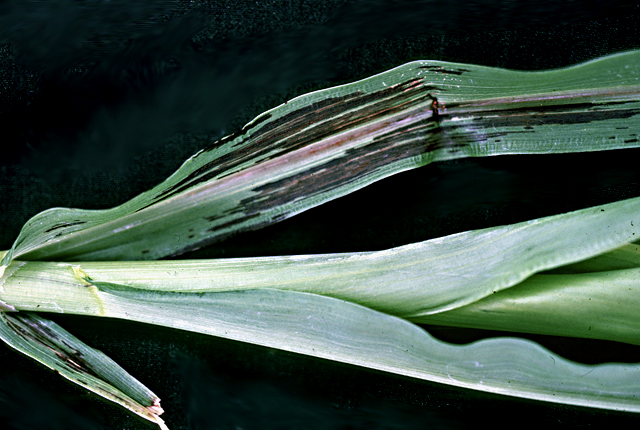
Bacterial leaf stripe | Sorghum
DISEASE: Bacterial leaf stripe
HOST: Sorghum (Sorghum bicolor)
PATHOGEN: Burkholderia andropogonis
PATHOGEN SYNONYM: Pseudomonas andropogonis
SOURCE: R. Gitaitis
DISEASE: Bacterial leaf stripe
HOST: Sorghum
Leaf with reddish brown stripes between veins.
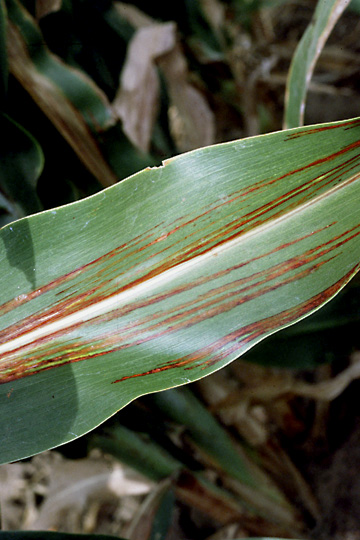
Bacterial leaf stripe | Sorghum
DISEASE: Bacterial leaf stripe
HOST: Sorghum (Sorghum bicolor)
PATHOGEN: Burkholderia andropogonis
PATHOGEN SYNONYM: Pseudomonas andropogonis
SOURCE: L. Claflin
DISEASE: Bacterial leaf stripe
HOST: Sorghum
Highly susceptible cultivar with severe symptoms.
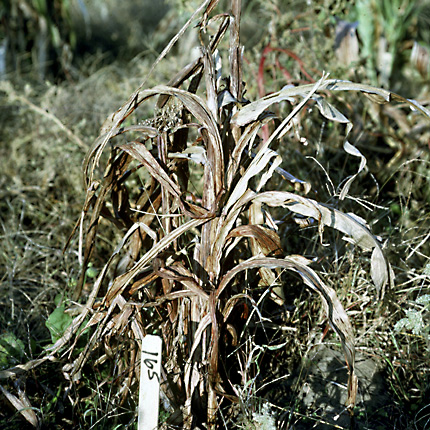
Bacterial leaf stripe | Sorghum
DISEASE: Bacterial leaf stripe
HOST: Sorghum (Sorghum bicolor)
PATHOGEN: Burkholderia andropogonis
PATHOGEN SYNONYM: Pseudomonas andropogonis
SOURCE: L. Claflin
DISEASE: Marginal leaf blight
HOST: Lettuce
Marginal leaf blight first appears as slimy wilting of leaf margins. Small, reddish lesions may be seen on leaf blades. Infected tissues turn brown to black in time.
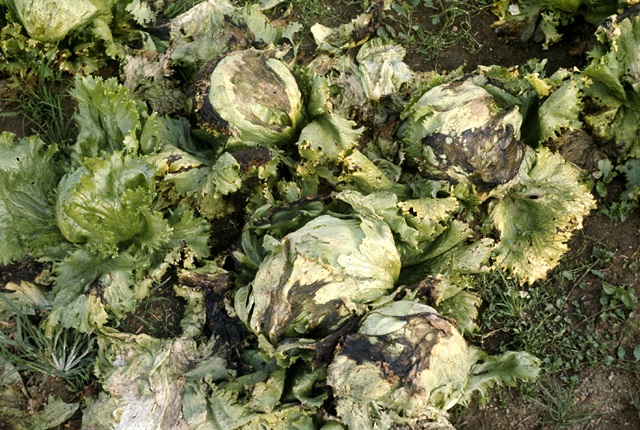
Marginal leaf blight | Lettuce
DISEASE: Marginal leaf blight
HOST: Lettuce (Lactuca sativa)
PATHOGEN: Pseudomonas marginalis
SOURCE: L. Fucikovsky
DISEASE: Tomato big bud
HOST: Tomato
Characteristic symptoms are swollen, apical stems and stunted leaves. Apical stems are generally thickened and assume a stiff and erect growth habit. Internodes are shortened and flower buds are greatly enlarged.
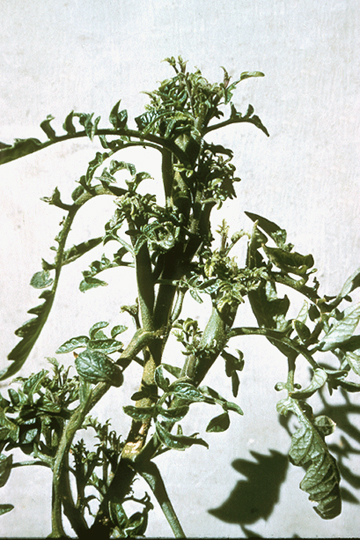
Tomato big bud | Tomato
DISEASE: Tomato big bud
HOST: Tomato (Lycopersicon esculentum)
PATHOGEN: 'Candidatus Phytoplasma asteris'
PATHOGEN SYNONYM: Phytoplasma Aster yellows group
SOURCE: D. Teakle
DISEASE: Tomato big bud
HOST: Tomato
Symptoms are enlarge sepals that do not separate. Flower buds stay green and do not develop into fruit. Leaves are small and chlorotic.
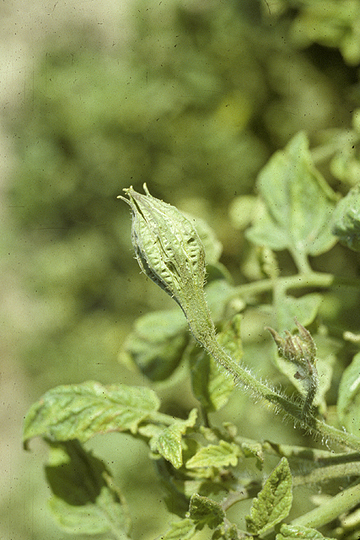
Tomato big bud | Tomato
DISEASE: Tomato big bud
HOST: Tomato (Lycopersicon esculentum)
PATHOGEN: 'Candidatus Phytoplasma asteris'
PATHOGEN SYNONYM: Phytoplasma Aster yellows group
SOURCE: S. Thomson
DISEASE: Tomato big bud
HOST: Tomato
Abnormal flower bud with greatly enlarged sepals. Sepals do not separate, fruit is not produced, and apical growth is upright.
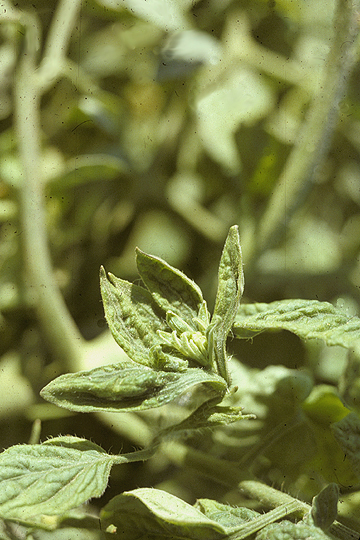
Tomato big bud | Tomato
DISEASE: Tomato big bud
HOST: Tomato (Lycopersicon esculentum)
PATHOGEN: 'Candidatus Phytoplasma asteris'
PATHOGEN SYNONYM: Phytoplasma Aster yellows group
SOURCE: S. Thomson


